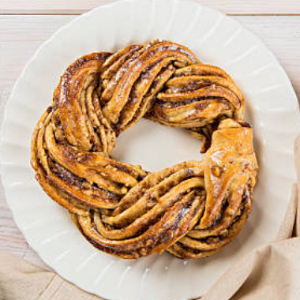As we mentioned, briefly, yesterday, Rye grain has been a central pillar of Estonian baking throughout the country’s history. The tiny Balkan nation was so successful in growing the crop that it not only fed itself on Rye but developed a thriving export industry as far back as the Middle Ages. Though most Estonian breads do contain Rye flour, some also contain wheat flour and other starches, and the variety of breads enjoyed there is surprising…
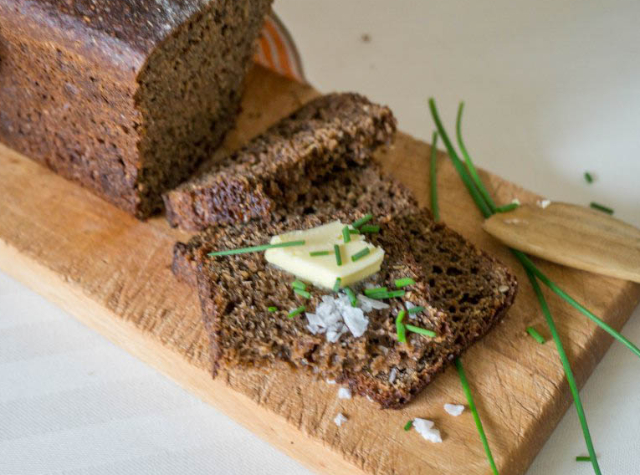 Leib: Estonian Black Rye Bread. The national loaf.
Leib: Estonian Black Rye Bread. The national loaf.
Sai: Estonian White Wheat Bread. It seems that, even when wheat is not a leading domestic crop, all developed nations north of the Tropic or Capricorn have at least one White Loaf on their national menu. In Estonia it’s called Sai, and differs very little, essentially, from the White Breads found elsewhere. However, Sai takes a remote back seat to Rye Bread. Estonians consume just one kg / 2.2 lb. of Wheat Bread for every 3 kg / 6.6 lb. of Black Rye Bread eaten. So next we’ll look at…
Leib: Traditional Fermented Black Rye Bread. ‘Leib’ is actually the general word for ‘Bread’ in Estonian. But when folks there ask for Leib, they are sure to get the country’s signature Black Rye. It’s made with straight rye flour, oat bran, sugar and coriander. Depending on where in Estonia you are dining it may also contain caraway, flax, hemp, sunflower, or pumpkin seeds). Leib is leavened with Kefir containing live bacteria, so it’s technically a sourdough. The whole process of preparing the leavening, mixing the dough and allowing the fermentation to take place may span as much as 12 hours.
Sepik: Whole Wheat Bread. This loaf is traditionally enjoyed on special occasions, not the least of which is New Years. Though mainly whole wheat, it may also contain rye flour, barley flour and/or bran.
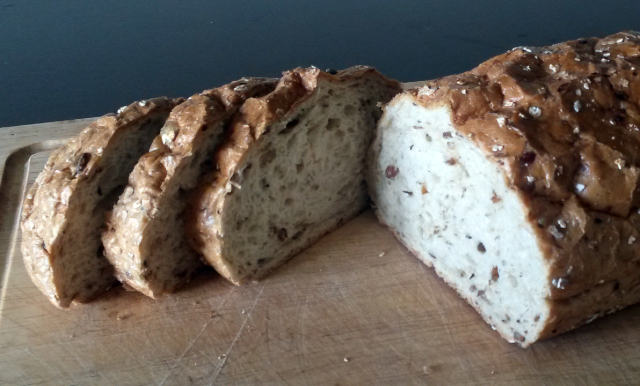
It’s a genuine Estonian original, evolved from an ancient South Estionian Barley Bread known as Karask. Both Sepik and Karask are enjoyed widely across the Balkans today.
Kartulipletskid: Potato Flatbread. It’s simple and quick: All you need is grated raw potato, a little wheat flour and vegetable oil. It’s rested, kneaded and rested again. Then, the dough is divided into 3 oz. / 85 g knobs which are pressed by hand into paper-thin flat rounds.
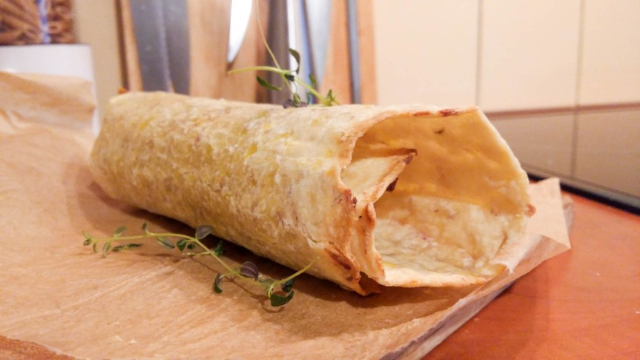
You can bake them in a 200 F oven for 10 minutes or so, or fry in a dry skillet (cast iron is ideal) for 2 – 3 minutes per side. If you want to roll them or form them into other shapes, do so while they’re hot. When cooled, they turn stiff and crispy.
Küüslauguleivad: Estonian Garlic Bread. But not your ordinary Garlic Bread! Strips of thick-sliced Leib are drizzled with a mixture of vegetable oil, garlic and salt. Then the strips are arranged not touching on a baking sheet and baked in a preheated 400 F oven for 12 – 14 minutes, until crisp.
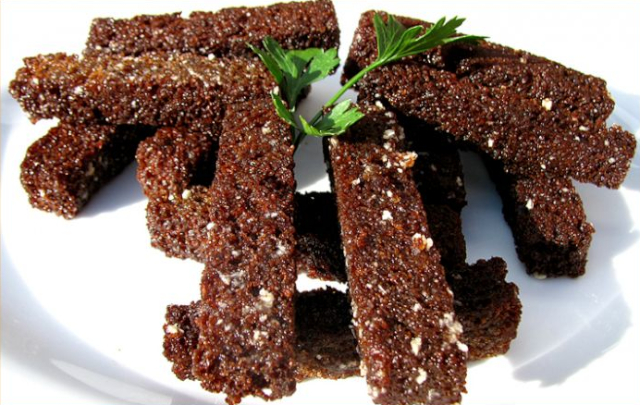
Finally, they’re tossed with a dressing of mayonnaise, milk, chopped fresh dill, garlic and black pepper. Additional dressing is usually served on the side for dipping.
Kringle: Braided Cinnamon-Sugar Bread. This Easter specialty is loved by all (see photo, top of page). It’s a yeast-raised loaf made with white wheat flour, with milk, melted butter, eggs and sugar. It’s a heavy dough that may take up to 1.5 hours to double in mass. The dough is then rolled out in a long rectangle about 1 cm / 3/8 in. thick and sprinkled generously with a cinnamon and sugar mixture. The dough is rolled up into a long log and split lengthwise into two multi-layered ribbons which are then twisted together and formed into a round wreath-shaped loaf. After another hour for the second rise, it’s baked at 375 F for 30-35 minutes.
Bread is big, really BIG!
It’s estimated that each Estonian eats an average of 40 kg / 8 lb. of their national Dark Rye Leib every year. Bread is clearly the backbone of Estonian cuisine. Tomorrow, we’ll survey Estonian deserts and signature beverages..
~ Maggie J.

